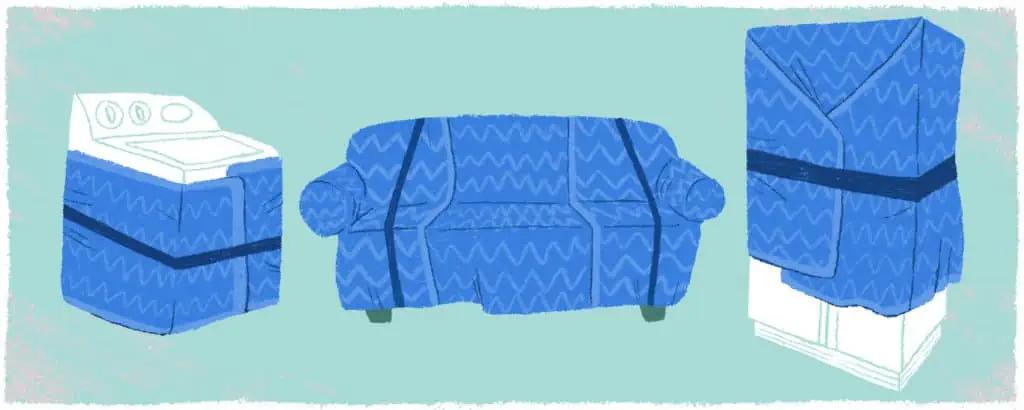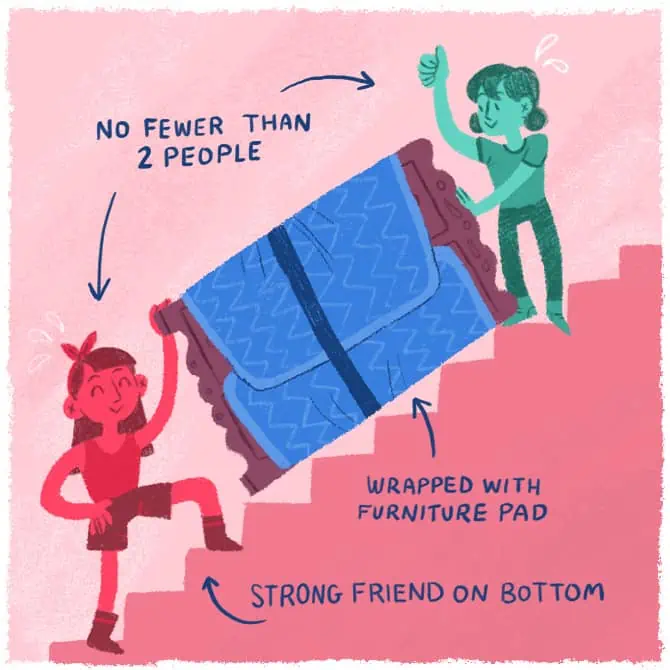When preparing a home to sell, the to-do list can seem never-ending. From applying a fresh coat of paint to updating light fixtures or installing new flooring, you will most likely invest money along the way. You can only hope to get it back in the sales price.
However, whether we’re talking about your trusty old appliance in your decades-old home, or a suspect looking fridge you saw inside of a brand new listing, you may be wondering whether that machine needs replacing. How do you know for sure?
Read on to learn when it’s time to replace common household appliances.
Common Refrigerator Repairs
It’s always best to see the warning signs of a faulty refrigerator before it’s too late, especially when the fridge is full of food.
If food is spoiling before the expiration date, that could be a sign that it is struggling to stay cool. Condensation on the inside of the refrigerator could also be a sign of cooling problems. However, condensation alone does not mean the fridge is broken! Condensation gathering on the outside of the fridge near the door openings is often a sign your fridge only requires a new door seal.
If your refrigerator is noisier than usual (or if the back of the fridge feels significantly warmer than normal), these can be signs of a malfunctioning motor. Refrigerator motor repairs can often be costly, though, so if the appliance is older than 10 years, it’s probably better to replace than repair.
How much does it cost to replace a fridge?
In general, if maintenance costs or utility bills are on the rise, replacement may be the right choice. According to Home Advisor, the price has quite a range. From a barebones box to a fridge from the future, you can expect to spend between $900-$8,000 for a new refrigerator, depending on the style and features you choose. New refrigerators should last between 6-15 years.
Common Dishwasher Repairs
When buyers consider purchasing a new home, they may wonder about the condition and quality of the dishwasher. A quick inspection may show some clear wear and tear, but it may not always be easy to detect every issue.
Obvious signs that a dishwasher should be outright replaced include a broken door latch, which could render the appliance inoperable, or a cracked body shell, which could cause leakage.
There are issues that are more challenging to find without running a cycle.
If the washer doesn’t drain, it could be a sign of a broken drain. Not only does this hinder the wash cycle, but it could also lead to leakage underneath the unit. In fact, rust under the dishwasher is a clear sign that the dishwasher should be replaced. It can be difficult to find, but can be detected if rust starts to flake off under the appliance.
If water is not getting hot enough to wash the dishes, there is likely an issue with the coil, and it’s likely wise to consider replacement in this case, especially if it is an older model.
How much does it cost to replace a dishwasher?
According to Home Advisor, you can expect to pay anywhere from $400-$700 at the store. New dishwashers should last between 8-10 years, with normal use.
Common Oven Repairs
The very first thing you need to do with ovens is to inspect it for any signs of rust. If rust is found on the inside of the oven, it’s likely time to upgrade to a newer model.
Oven not heating properly? There could be a number of reasons for this, including cracked glass on the door, but if the oven is several years old already, the cost to repair may not be worth it.
The average lifespan of an oven is around 10-15 years. Retro is great for setting a vibe, however in terms of selling a home, some fully functioning appliances from a decade ago may no longer meet your needs or the needs of potential home buyers. Electric coil cooktops, for instance, may work great, but they could also turn off buyers looking for glass top options. Others may want newer features, like convection or rapid boil burners.
How much does it cost to replace an oven?
Expect to pay anywhere from $650-$2,000 for a new oven, depending on the features and styles you need.
Common Garbage Disposal Repairs
Homeowners often forget about the importance of garbage disposals until a problem arises. It can be challenging to know whether to repair or replace the disposal, though. An occasional loud noise or clog, for example, may not be cause for concern!
If you experience frequent garbage disposal clogs and leaks, however, it could be a sign that the motor is dying, or that your family’s cleaning needs and habits may require a higher capacity model. (I suggest throwing your regular compost away for a few weeks to see if the problem persists.) Leaks underneath the sink can also be a sign that the disposal needs replacement. If you experience either of these issues, it is wise to call an experienced technician to repair or replace your garbage disposal.
How much does it cost to replace a garbage disposal?
You can expect the average garbage disposal to last 8-15 years with normal use, and new disposals typically cost $85-$200, plus the cost of installation.
Common Washing Machine Repairs
It’s best not to wait until there’s a flood in the laundry room to consider replacing your washing machine. Some water leakage from your washer may not be a reason to replace it, but rather a sign that the hoses have come loose over time.
However, if the hoses are installed correctly, and in good condition, and leakage still occurs, you may want to consider a new washing machine. It’s common for a washing machine to occasionally become imbalanced, causing loud noises and even movement. Often, the cause for this could simply be a large item, like a comforter, that has moved to one side. If your washer frequently moves regardless of what is in it though, it could be a sign of a larger issue and may need to be replaced.
Like ovens, washing machines have seen many updates in recent years. Though a typical machine could last anywhere from 8-12 years, certain features, like a front loader, could attract more buyers. However, if unnecessary replacement isn’t in your budget, just be sure to give the machine a good cleaning, remove visible lint and debris, and repair any minor issues before putting your home on the market.
How much does it cost to replace a washing machine?
A new machine will run anywhere from $350-$1,000, according to Home Advisor, it’s important to know what signs to look for to know when the appliance should truly be replaced.
Common Dryer Repairs
Many dryer issues can be fixed with the help of an appliance professional. If the drum won’t turn or you hear unexplained banging or popping noises while the dryer is on, the cause is likely a faulty belt. A dryer that won’t start could be caused by a broken door sensor or lock, which can be an easy fix. However, if the dryer isn’t heating properly, or if it is turning off mid-cycle, you may want to consider purchasing a new dryer.
But if the dryer is getting way too hot or has a burning smell – and the lint cleaner isn’t to blame – this is a surefire “replace” situation.
The average lifespan of a well-maintained dryer is 8-12 years, so while many of these issues are easy to fix, it may make sense to simply replace older models, which could continue to have issues over time. Some homeowners also decide to replace their dryer when purchasing a new washer, so the two appliances match.
How much does it cost to replace a dryer?
New dryers can cost between $400-$1,000, depending on features and style.
Always get a free repair quote to compare against replacement costs
Make sure to always fetch a free appliance repair quote before you go put a deposit down on a brand new machine!
Ultimately deciding whether to repair or replace an appliance can be a challenging task. First, consider the age of the appliance, as well as its average life span. A 12-year-old refrigerator, for instance, may not justify a costly motor repair, while the same aged dryer would need to be replaced over a faulty door sensor. Keep in mind that even if your old one is working, newer machines of any kind will likely save on electricity and/or water costs.
Plus, if you plan to place your home on the market in the near future, you may also want to consider the new features buyers look for. (For instance, a top-loading washer in fair condition may not add as much value to the home as a newer front load machine.)
If you decide to replace, just be sure to do your research and select an appliance that will last!









